Our Blog - Paris 2015 - Day 4
Remember when I mentioned about eating dessert with every meal? Well we started out Day 4 with dessert between breakfast and lunch. We had looked up the "best lemon tart" in Paris and one of the top Lemon Tart patisseries was Liberte boulangerie patisserie, which just happened to be in the same general area as our B&B. So we headed over there after breakfast and bought a lemon tart. Interestingly enough, this was not like any lemon tart I had ever had. Normally, they look like a little pie (if you remember what my tart looked like on both Day 1 and Day 2) and this one did not. There were two thin cookie-like squares on the bottom ... somewhat like a shortbread cookie .. topped with 9 little dollops of lemon custard. It didn't look like a normal tart, but it tasted like one.
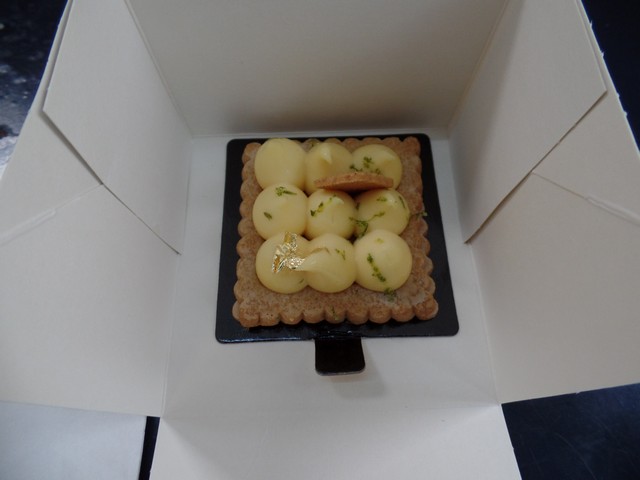
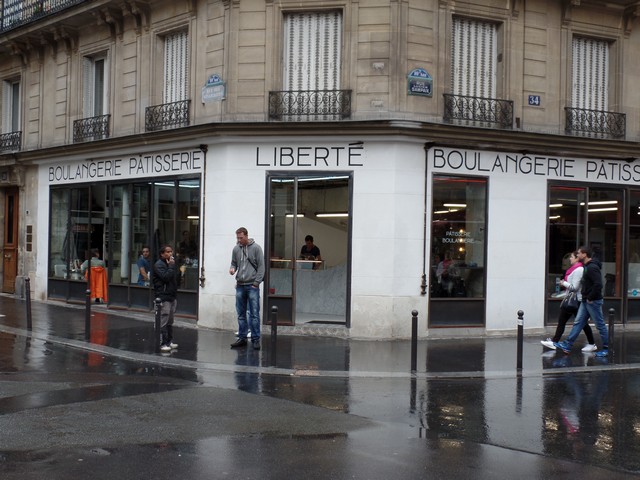
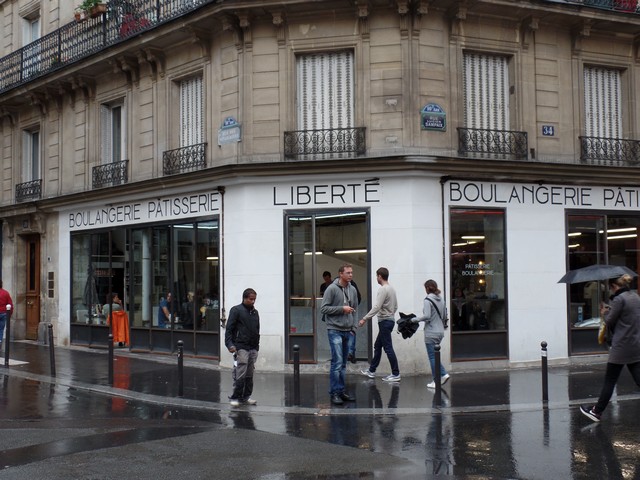
After our little pre-lunch dessert, we headed to what would end up being our lunch, which was a 3-hour wine and cheese class from Paris by Mouth (www.parisbymouth.com). This was done by Meg, who is originally from Kansas but now lives in Paris. She went there originally to work and then started her own food blog. In addition to her blog and food tours, she writes about food in Paris for the Wall Street Journal. In the past, she has served as the Paris editor for both Budget Travel and BlackBook and has contributed to Food & Wine, SAVEUR, AFAR, Gridskipper, the BBC's Olive magazine, and the seat-pocket magazines of United, Virgin Trains, and Gulf Air. She also hosted a program on Paris Street Eats for the Travel Channel.
We signed up for the French Cheese and Wine workshop and it ended up being a great way to spend lunch. The workshop talks about how different cheeses are produced (what accounts for their texture, color, and smell), why French cheesemakers use raw unpasteurized milk in their cheese (versus in the US, all cheeses are pasteurized), how seasonality and aging impacts cheese, etc. She has partnered with a placed called the Japanese Knife Company and has a little area setup in their store. She laid out the cheese and a demi-baguette for each of us. There were 12 different cheese in 6 categories and we paired them with 7 different wines.
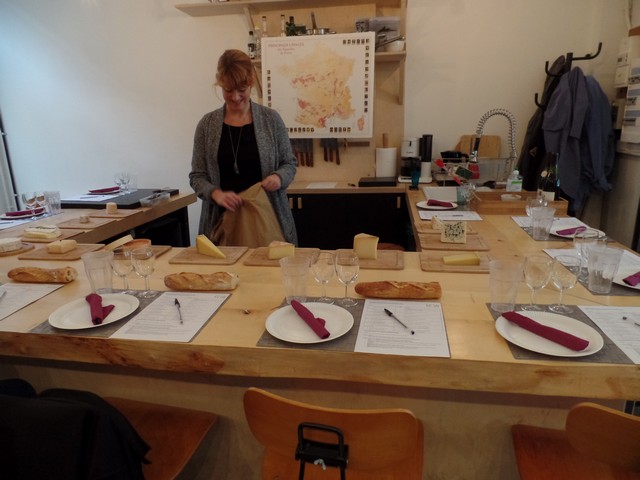
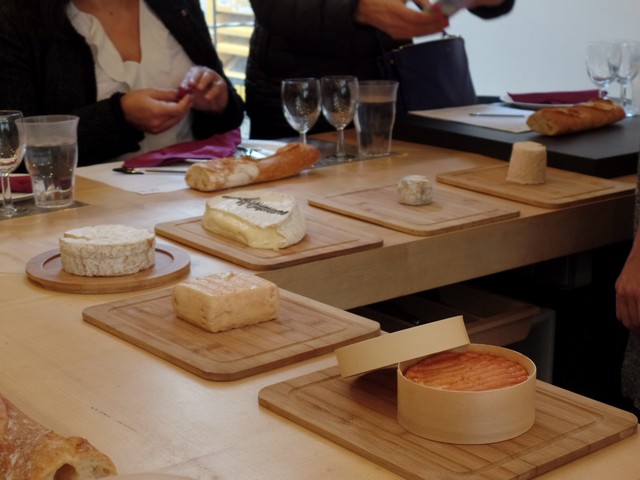
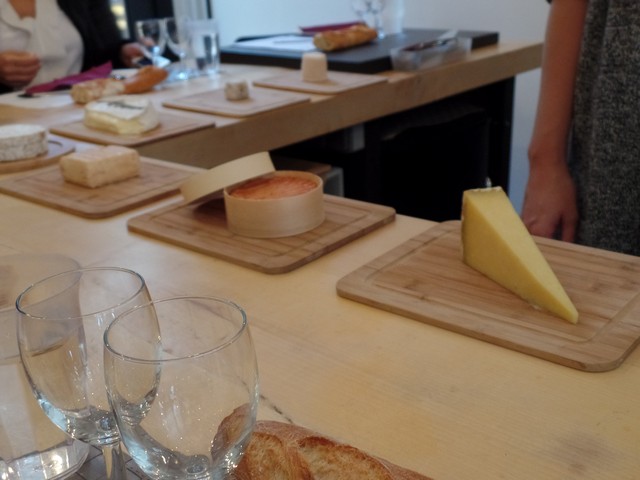
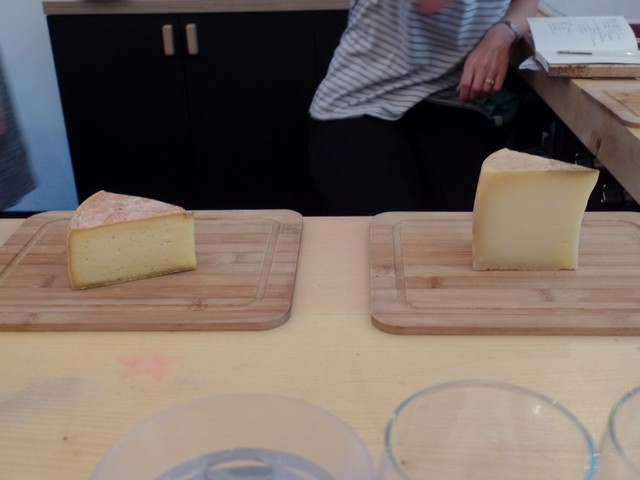
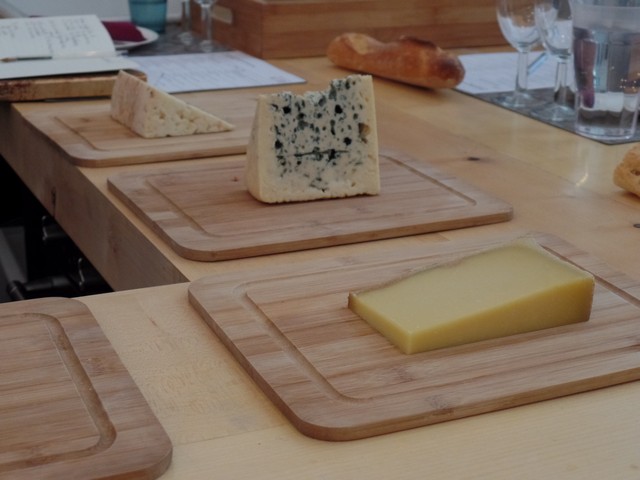
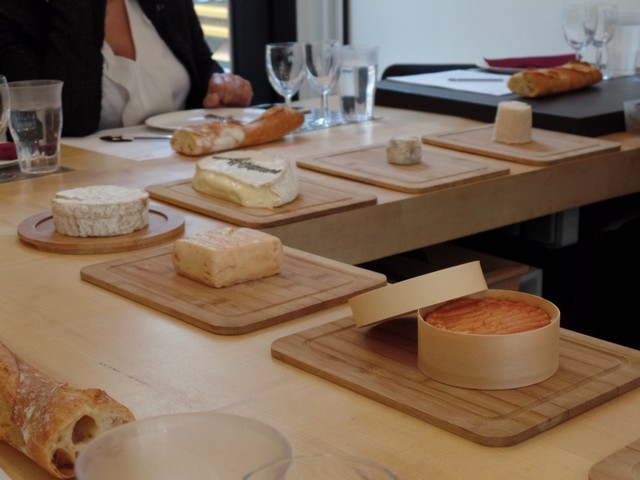
The first type of cheese was Young Chevre. Chevre is a goat cheese and when young, Chevre is mild and creamy. Our first one was called Chabichou which is a traditional soft, unpasteurized, natural-rind French goat cheese with a firm and creamy texture.
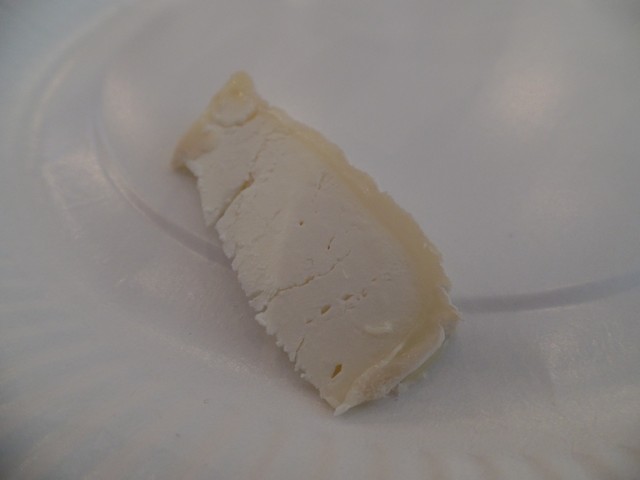
The second, also a young goat cheese was Crottin de Chavignol. It is the most famous goat cheese of the many varieties produced in the Loire Valley. This cheese is the claim to fame for the village of Chavignol, France, which has only two hundred inhabitants. The type of cheese from Chavignol dates back to the 16th century. The flavor is subtle and slightly nutty, and when it is young it has a white rind. You can get this older as well and as it ages, the flavor gets stronger and the rind gets hard.
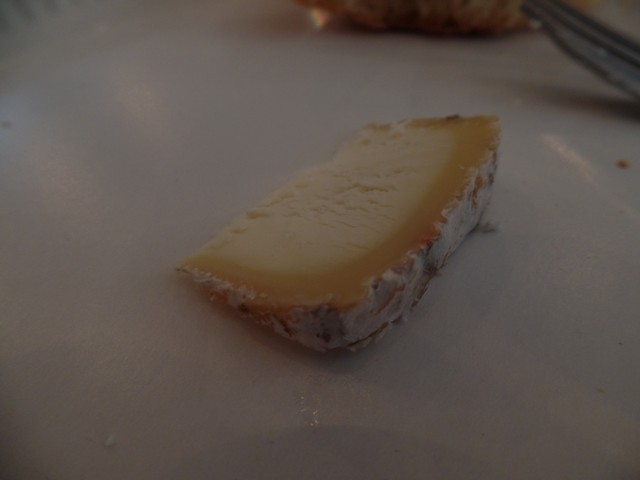
Both of these ended up being paired with white wines ... Muscadet Sevre et Maine Orthogneiss 2013 from Domaine de l'Ecu (Loire valley) and a Riesling from Domaine Stentz-Buecher.
The next type of cheese was called "Bloomy Rind". Bloomy rind is a way of describing cheese and it means that the cheese rind becomes soft and fluffy and the rind becomes white in color. Cheese that uses Penicillium camemberti is prone to developing bloomy rind. Bloomy rind cheese can be described as having "mild and lactic" flavors that may resemble onion or mushroom. They are described as being "ripened from the outside," and usually have creamy textures. Brie is one of the more well-known types of bloomy rind cheese. Our first bloomy rind cheese was called Fougerus. It is a cows's milk cheese that is a handmade cheese with a soft, creamy texture and a white bloomy rind. The bloomy rind cheese tend to be quite soft, almost gooey. The second one (I didn't get a picture of, sorry) was a Camembert from Normandie (also cow).
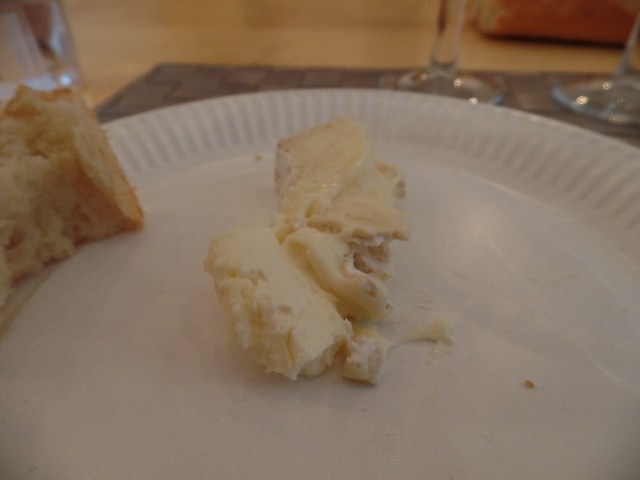
We paired these two cheese with a light red wine called Sancerre Rouge from Francois Crochet.
The 3rd type of cheese is called Washed Rind. Washed-rind cheeses are soft in character and ripen inwards like those with white molds (like the bloomy rind ones) but they are treated differently. Washed-rind cheeses are periodically cured in a solution of saltwater brine and/or mold-bearing agents that may include beer, wine, brandy and spices, making their surfaces amenable to a certain class of bacteria that impart pungent odors and distinctive flavors, and produce a firm, flavorful rind around the cheese. We had 2 of these cheese. The first Vieux Lille (Old Lille). This is normally a very strong cheese (one website indicated it was their "strongest cheese in the shop". The history of this type of cheese goes back to the Middle Ages when French cheese-making was the domain of the Monasteries. This is an unpasteurized cow's milk cheese which is washed with brine for three months. The brining process eliminates any rind, and the paste has a moist surface which is slightly grey in color. Although the cheese holds together when cut, the consistency is best described as semi-soft. For us, this had a very strong peanut flavor .. quite good. She mentioned that it was as strong as some of the Vieux Lille that she has gotten in the past.
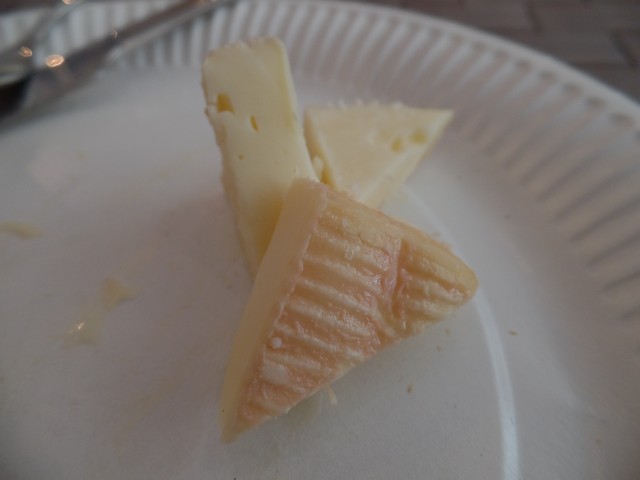
Epoisses de Bourgogne is a cheese made in the village Epoisses, located around halfway between Dijon and Auxerre. It is a pungent unpasteurized cows-milk cheese. It is another washed rind cheese, although this one is washed in Marc de Bourgogne, the local pomace brandy). Each cheese is rinsed up to three times per week in a mixture of water and marc, and brushed by hand to spread the bacteria evenly over the surface. The yeast and fermenting agents produce the distinctive orange-red exterior, as it develops over a period of around six weeks. It is always found in a circular wooden box and has a distinctive soft red-orange color on the top. It is very soft (you can see from the picture) and is usually served on a spoon. The history for this cheese starts in the sixteenth century, when the village was home to a Cistercian community at L'Abbaye de Citeaux that, according to legend, began production of the cheese. Two hundred years later, when the community left, they left local farmers the recipe, which developed over the next century. Flavor-wise, this had a very smoky flavor .. almost like bacon!
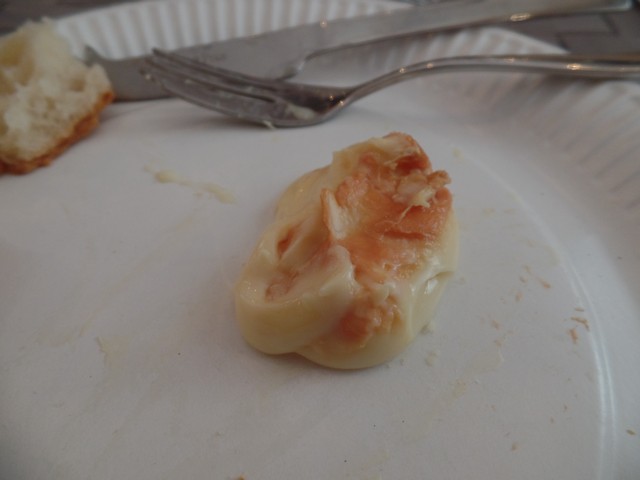
This was paired with a 2011 Bourgogne wine from Ghislaine Barthod.
Next set of cheese are called Uncooked Pressed cheeses. For this type of cheese, the curds remain uncooked. Whey is removed by pressing the cheeses to complete drainage, thus achieving a firm texture. Pressed cheese were designed to be able to be aged since the moisture in the cheese that determines if it must be a young cheese or can be aged and remain good for a longer period of time. The first one of these cheese was called Tomme de Chartruese, which is a cow's-milk cheese from the Savoy region of France. She mentioned that it was somewhat of a rare cheese. It is fairly compact and with a certain flexibility and elasticity. It has a yellowish color and a slightly pasty texture. Its taste is sweet with subtle flavors, perhaps coming from the mountain grasses and flowers that the cows eat in this mountainy area.
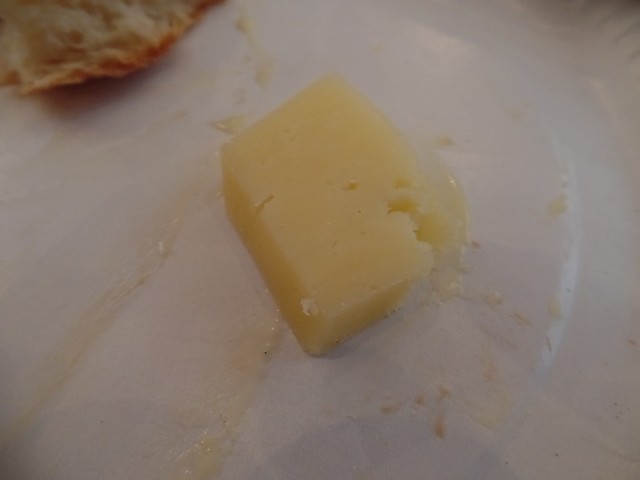
Next up was Ossau-iraty, which is a French sheep-milk cheese. It is produced in the south-western region of France called the Basque region. For this type of cheese, the crust is yellow-orange to gray, and the body color ranges from white to cream depending on how it has been matured. It is smooth, creamy and firm, and may have some small holes. It tended to have a mild but salty flavor.
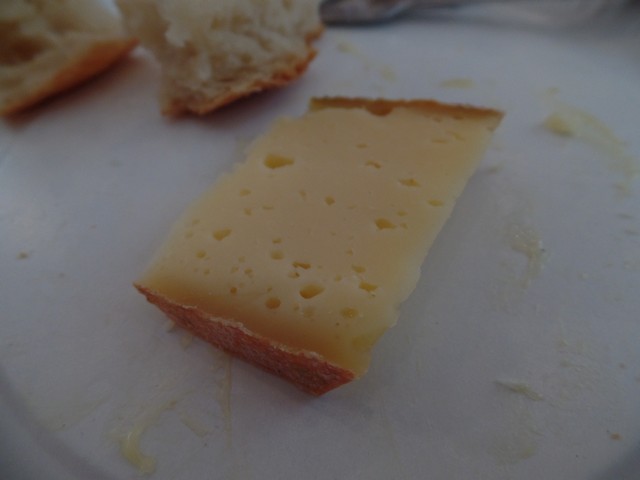
The wine pairing for this cheese was a bolder red wine called Cotes Du Rhone "Brezeme" from Erix Texier.
We finally then moved into cooked cheeses! These next two are in the Cooked Pressed Cheese category. Still pressed, so that you get the moisture out so that they can age longer, but this time cooked or pasteurized milk is used. A lot of the cheeses that Americans are familiar with fall into this category: Gruyere, Emmental, Gouda, and Parmesan. I didn't actually get pictures of these cheeses, which were Cantal and Beaufort Chalet d'Alpage.
The last set of cheeses was Blue cheeses. Blue cheese is a general classification of cheeses that have had cultures of the mold (Penicillium) added so that the final product is spotted or veined throughout with blue, blue-grey, blue-green, or blue-brown mold. It has a distinct smell, either from that or various specially cultivated bacteria. Some blue cheeses are injected with spores before the curds form and others have spores mixed in with the curds after they form. Blue cheeses are typically aged in a temperature-controlled environment such as a cave. Blue cheese can be eaten by itself or can be spread, crumbled or melted into or over foods. I know, doesn't sound that great, huh?
The first is called Bleu des Causses, which is a cow's milk blue cheese. It is generally considered milder than Roquefort (which is the next cheese). It is aged for 3-6 months in Gorges du Tarn's natural limestone caves. The ripening process involving naturally temperature-controlled cellars is the major element that gives it its special aroma. At the maturing cellar, the cheeses are brushed or washed and wiped. They are then perforated: this operation promotes internal ventilation of the cheese and allows harmonious development of mold. The cheese is then stored on racks in cellars naturally temperature controlled by fleurine.
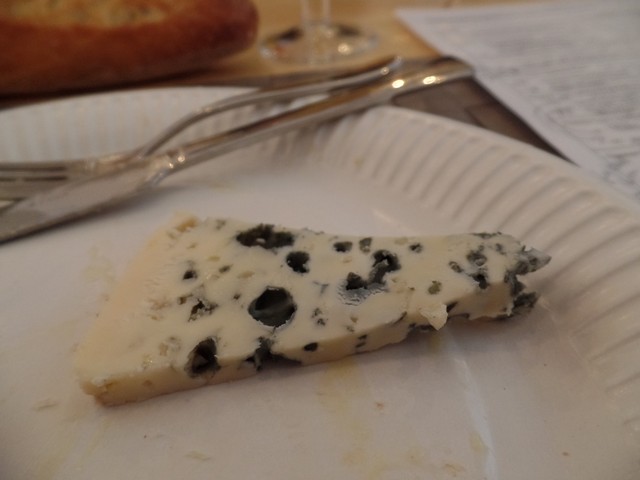
The last cheese is Roquefort, which is fairly well-known. It is a sheep milk blue cheese from the south of France, and together with Bleu d'Auvergne, Stilton, and Gorgonzola is one of the world's best known blue cheeses. Though similar cheeses are produced elsewhere, EU law dictates that only those cheeses aged in the natural Combalou caves of Roquefort-sur-Soulzon may bear the name Roquefort, as it is a recognized geographical indication, or has a protected designation of origin. The cheese is white, tangy, crumbly and slightly moist, with distinctive veins of green mold. It has characteristic odor and flavor with a notable taste of butyric acid; the green veins provide a sharp tang.
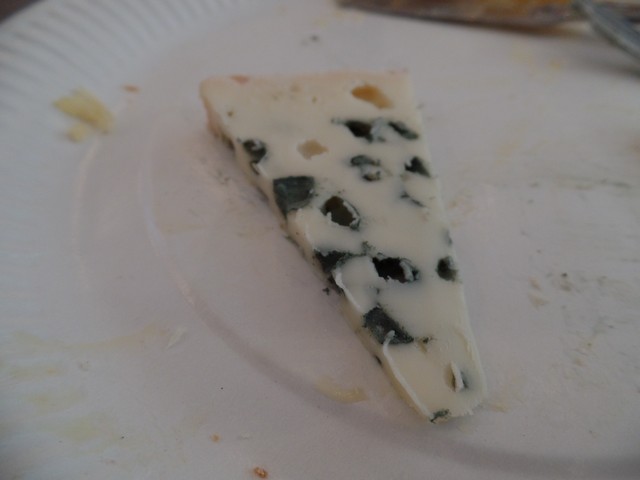
Blue cheeses are very salty and need to be paired with something sweet, like a sweet fig bread, jam. For wine, we paired it with a dessert wine, Loupiac 2007 from Chateau Dauphine-Rondillon.
So then after 3 hours of wine and cheese, it was time to do some general walking. It wasn't too bad of a day, so we took the opportunity to walk through the Tuileries and into the Place de la Concorde. The Tuileries Garden was created by Catherine de Medici as the garden of the Tuileries Palace in 1564. It was eventually opened to the public in 1667, and became a public park after the French Revolution. In the 19th and 20th century, it was the place where Parisians celebrated, met, promenaded, and relaxed. As you walk out of the Tuileries Garden, you can look through the gates to the Obelisk and down the Champs Elysees to the Arc de Triomphe. The Grand Arch La Defense is also in the same exact line.
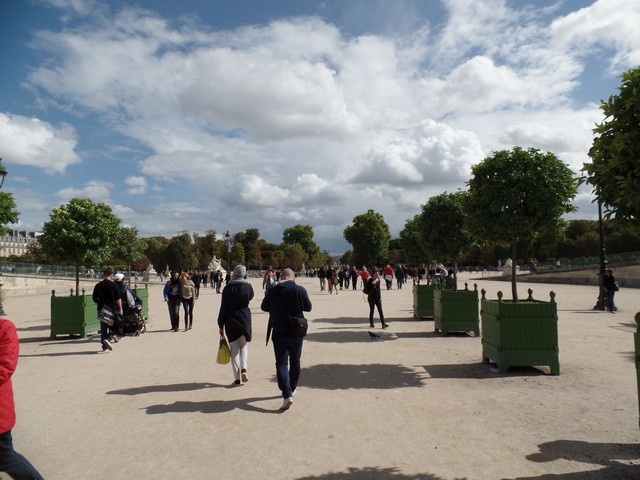
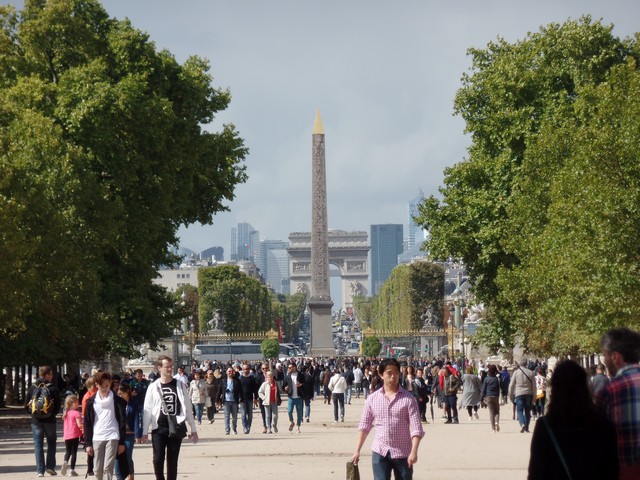
The statue of Renommee, or the fame of the king, riding the horse Pegasus was created by Antoine in 1699. It was originally in the estate of Louis XIV at Marly but moved to the Tuileries in 1719 and is now at the west entrance of the Garden. The giant Egyptian obelisk is decorated with hieroglyphics exalting the reign of the pharaoh Rameses II. It is one of two obelisks that the Egyptian government gave to the French in the 19th century. The other one stayed in Egypt, too difficult and heavy to move to France with the technology at that time. In the 1990s, President Francois Mitterrand gave the second obelisk back to the Egyptians. The obelisk once marked the entrance to the Luxor Temple. Egypt offered the 3,300-year-old Luxor Obelisk to France in 1829 and it arrived in Paris on 21 December 1833. Three years later, on 25 October 1836, King Louis Philippe had it placed in the center of Place de la Concorde. The obelisk, a yellow granite column is 75 ft tall and weighs over 280 tons. Back in 1829, getting it from Egypt to France was not easy and the pedestal has diagrams explaining the machinery that was used for the transportation.
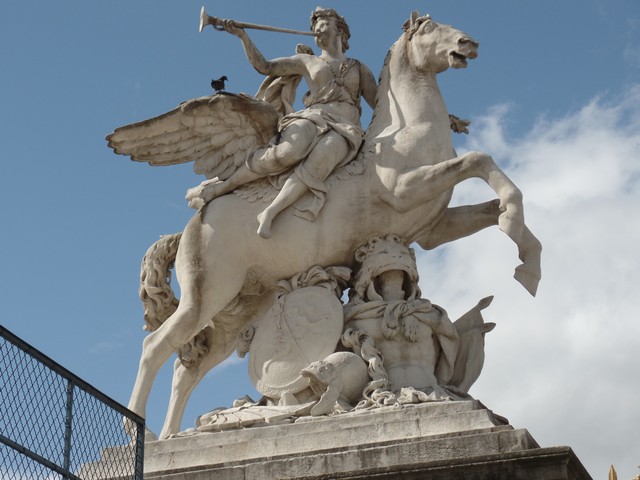

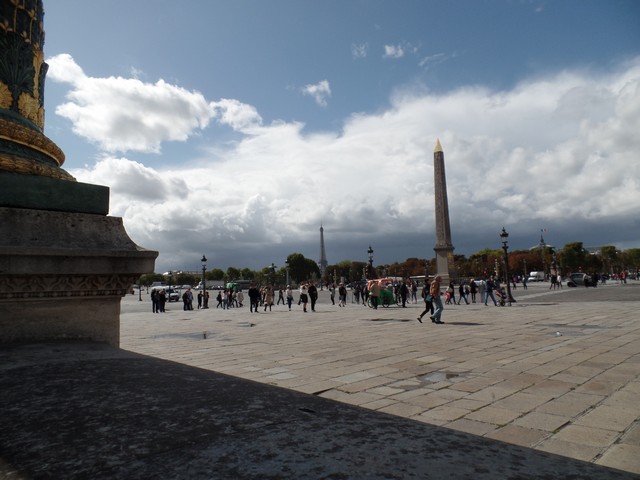
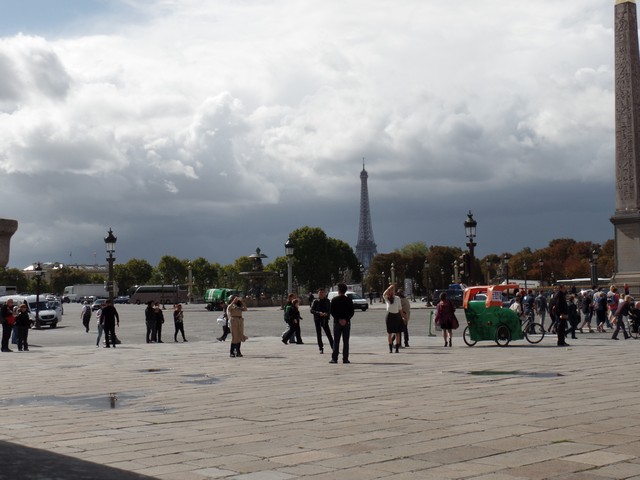
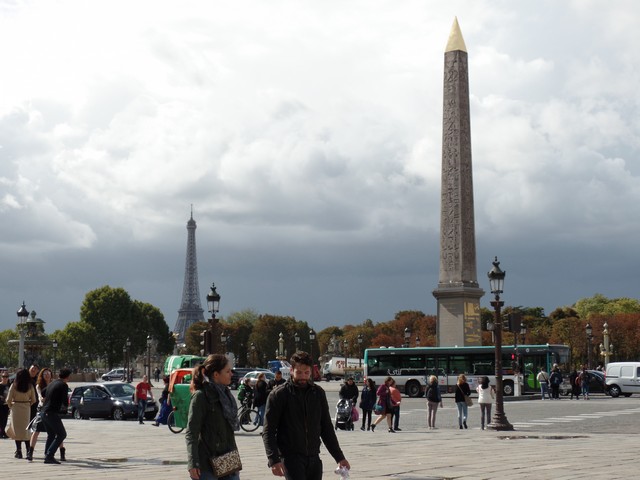
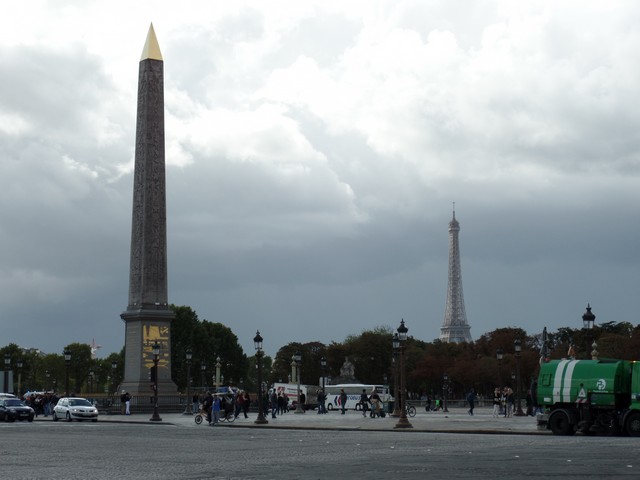
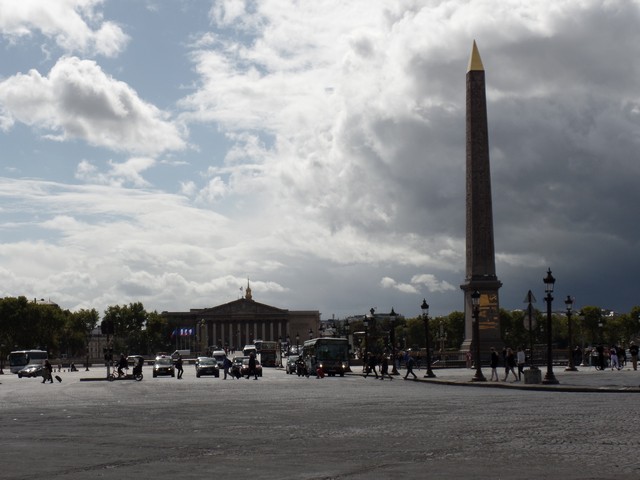
There are 2 fountains in the Place de la Concorde, designed by Jacques Ignace Hittorff, a student of the Neoclassical designer Charles Percier at the Ecole des Beaux-Arts. The two fountains have a the theme of rivers and seas, in part because of their proximity to the Ministry of Navy, and to the Seine. Their arrangement, on a north-south axis aligned with the Obelisk of Luxor and the Rue Royale, and the form of the fountains themselves, were influenced by the fountains of Rome, particularly Piazza Navona and the Piazza San Pietro, both of which had obelisks aligned with fountains. Both fountains had the same form: a stone basin; six figures of tritons or naiads holding fish spouting water; six seated allegorical figures, their feet on the prows of ships, supporting the pedestal, of the circular vasque; four statues of different forms of genius in arts or crafts supporting the upper inverted upper vasque; whose water shot up and then cascaded down to the lower vasque and then the basin. This is the north fountain, which was devoted to the Rivers, with allegorical figures representing the Rhone and the Rhine, the arts of the harvesting of flowers and fruits, harvesting and grape growing; and the geniuses of river navigation, industry, and agriculture.
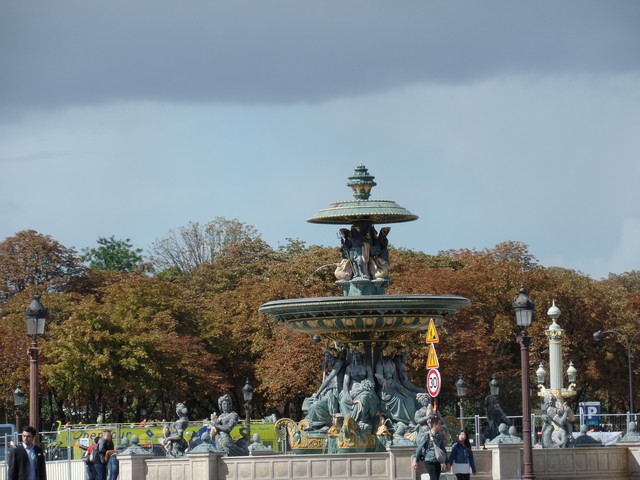
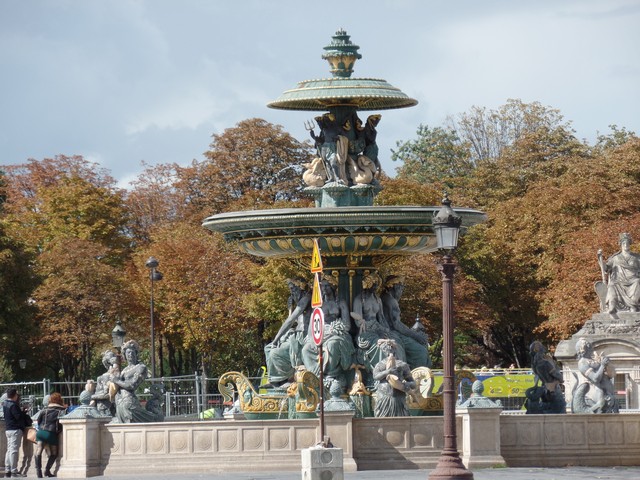
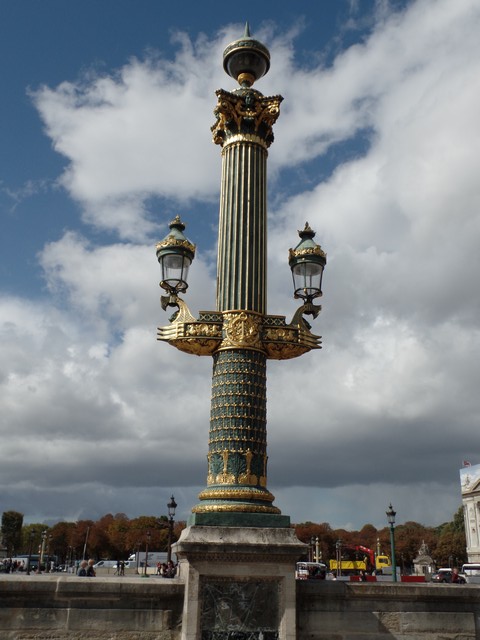
Here is Tom's next car!! We stopped by the Renault store on the Champs Elysees and on the main floor, we saw a Twizy. It is a battery-powered 2-person electric car with a maximum range of 62 miles. Well ... 2-person is a little bit of a stretch ... 1 person plus a purse .. 1 person plus a bag of groceries, maybe! It was the top-selling plug-in electric vehicle in Europe during 2012.

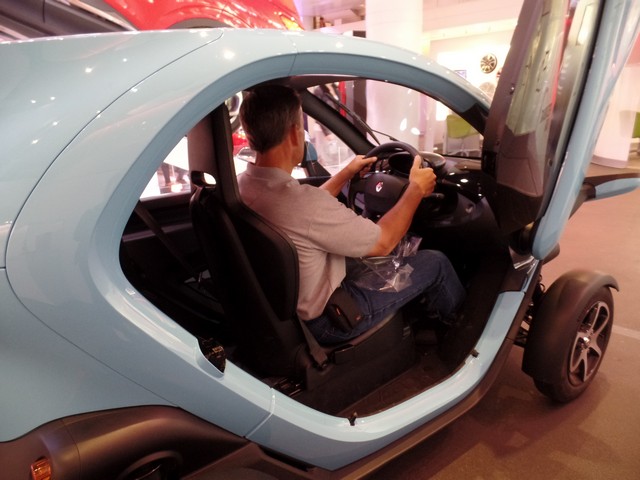
Then down to the Arc de Triomphe, which you've probably read about several times already through my blogs. The Arc de Triomphe honors those who fought and died for France in the French Revolutionary and the Napoleonic Wars, with the names of all French victories and generals inscribed on its inner and outer surfaces. Beneath its vault lies the Tomb of the Unknown Soldier from World War I. The monument was commissioned in 1806 after the victory at Austerlitz by Emperor Napoleon and designed by Jean Chalgrin, although not completed until the reign of King Louis-Philippe (1833-1836) under the direction of Jean-Nicolas Huyot. Its iconographic program pits heroically nude French youths against bearded Germanic warriors in chain mail. It set the tone for public monuments with triumphant patriotic messages. To give an idea of the size, three weeks after the Paris victory parade in 1919 (marking the end of hostilities in World War I), Charles Godefroy flew his Nieuport biplane through it.
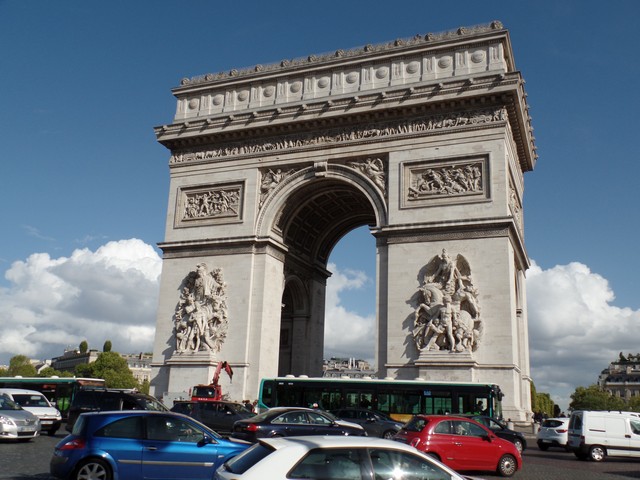
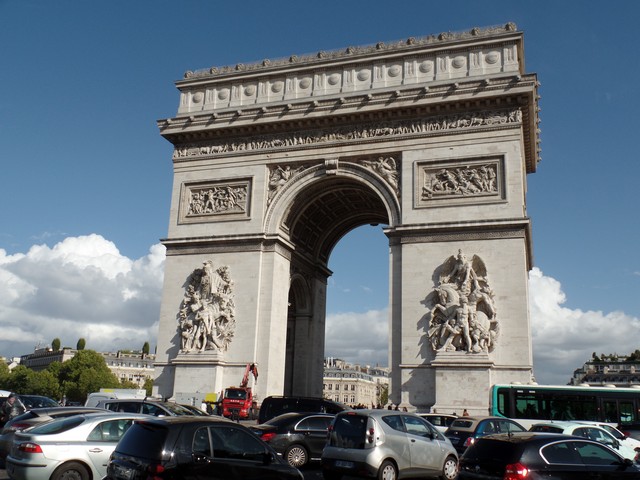
One of the reasons why we went by the Arc de Triomphe is that we like to just walk down the streets where we used to live and see what has changed. There were quite a few things that seem to have changed. The boulangerie on the corner was the same and we couldn't tell about the butcher since his store was being totally renovated (reopening in October). The poisonniere (the fish-guy) was still there but the name seemed to be different than it was when we were living there. They were closed when we went by so we weren't able to look in to see if it was the same person. There was still an epicerie but again, closed. The FranPrix, which was our local grocery store, had been totally renovated as well and was open and bright inside. Some of the restaurants had changed and some of them hadn't. I guess this is somewhat normal from the standpoint that we moved away in 2009.
Then we have our dinner ... tonight it was Le Grand Pan, which was a little off the beaten path and was a bit of a hike after we got off the metro, in a quite neighborhood. I think Tom found it in the NY Times where they had a writeup back in 2012. The chef and owner is Benoit Gauthier whose father was a butcher. This may have been where he got his love for great meat. The two-room bistro's decor is simple, from the red leather banquettes to the handwritten menu on a huge blackboard.
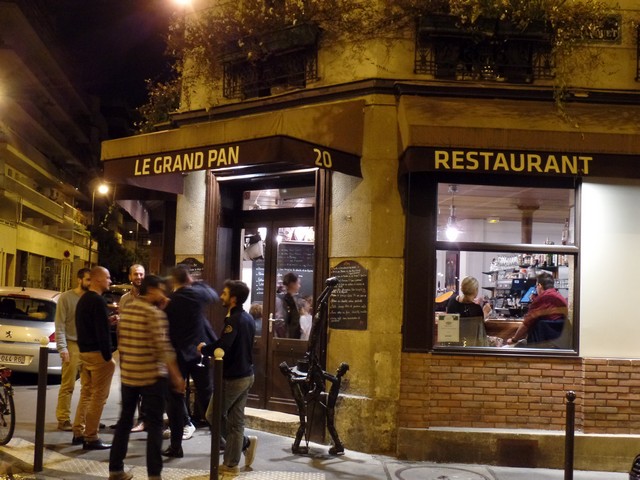
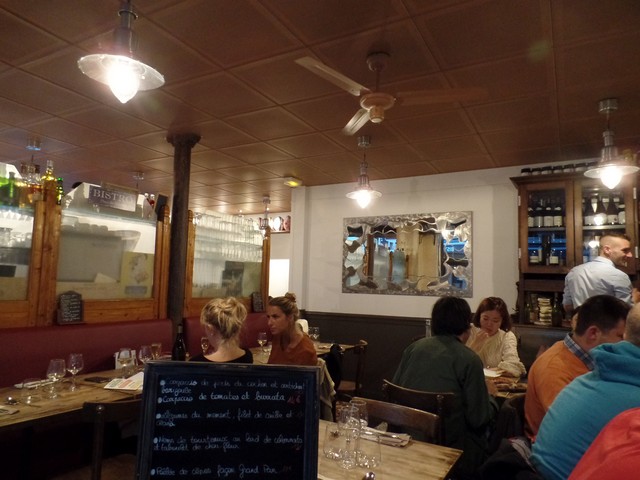
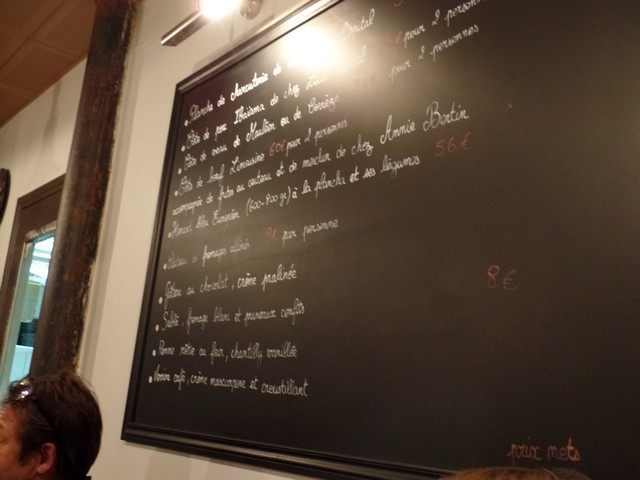
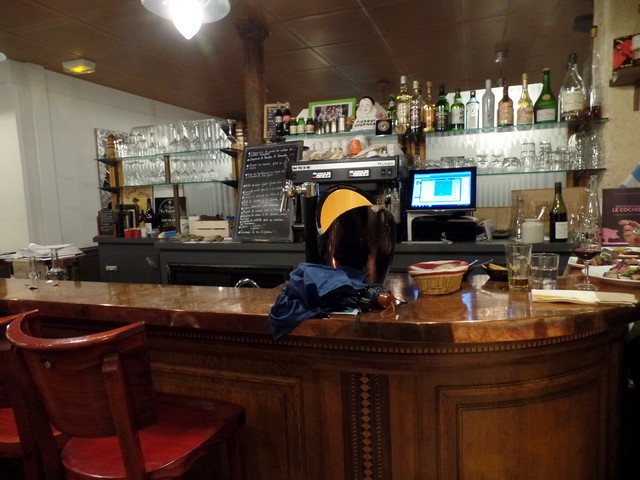
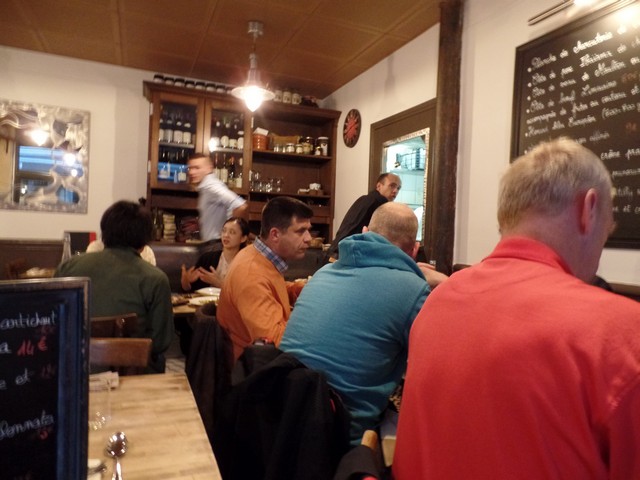
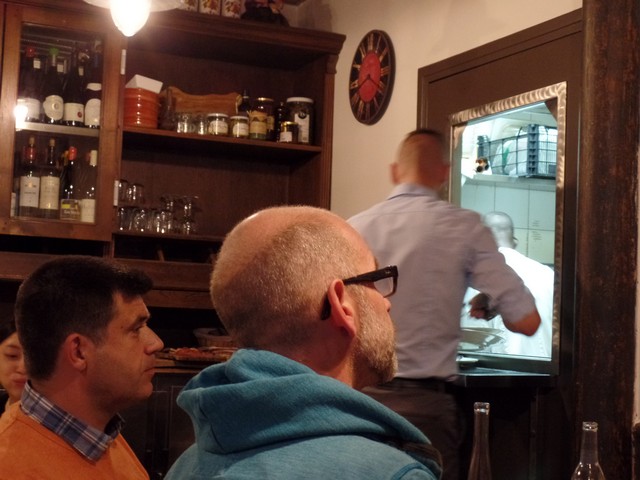
We started (again) with a charcuterie which had 4 different types of sausages. For me, the two on the left were the best ... the beige-looking one was okay, but I wasn't a big fan of the darker red one to the right. We went with the Cote du boeuf Limousin for 2, which came perfectly cooked "a point" (which is medium-rare) and it came with frites (fries). I really had never thought of Steak and Fries as a French dish but it is quite normal there. I'm not sure why we only have one picture for dessert, but this is the gateau chocolat, creme praline (chocolate cake with a praline cream).
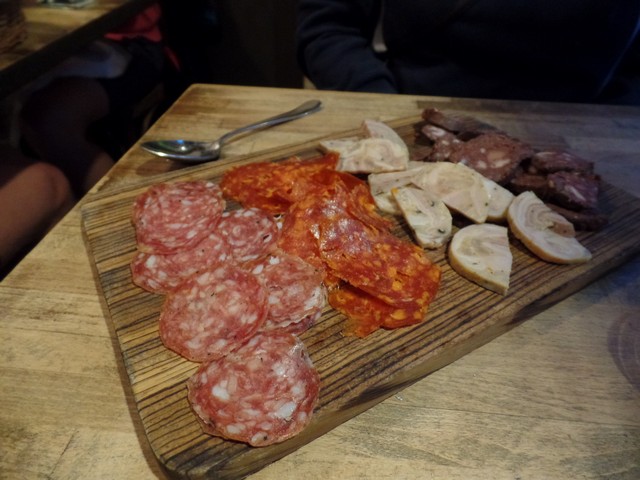
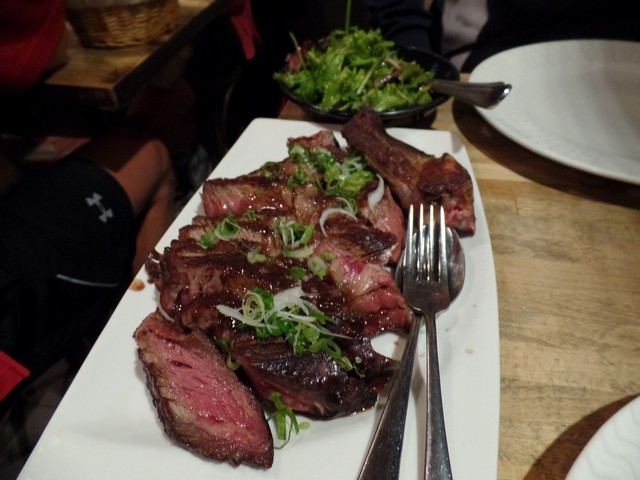
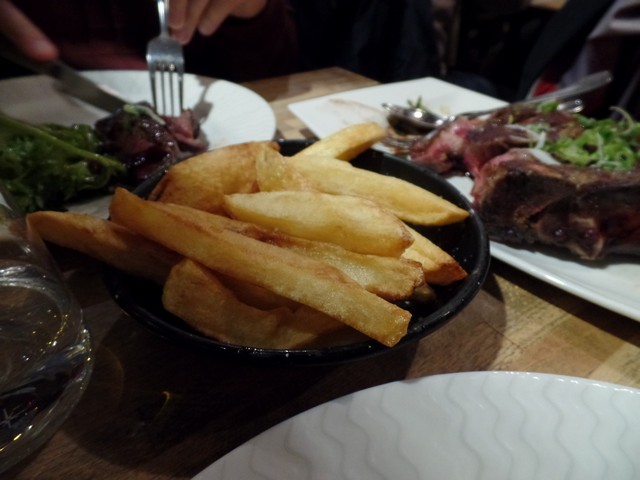
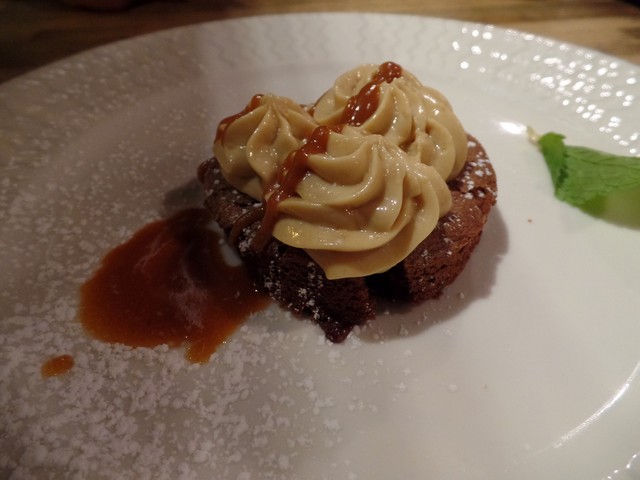
It seems like the chef is also a huge rugby fan, and there is one wall that is lined with rugby balls and there is a small corner that seems to be devoted to CA Brive Rugby team from Correze Limousin. CA Brive is a French rugby union team founded in 1910 and based in Brive-la-Gaillarde in the departement of Correze of the Limousin region. They wear black and white and play in the Stade Amedee-Domenech.
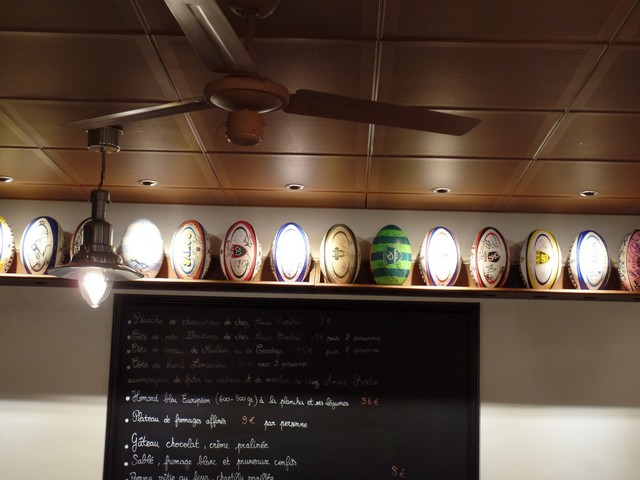
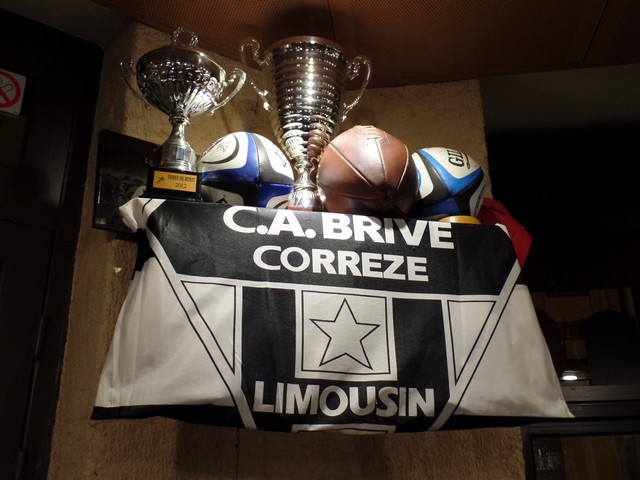
Go to Day 5